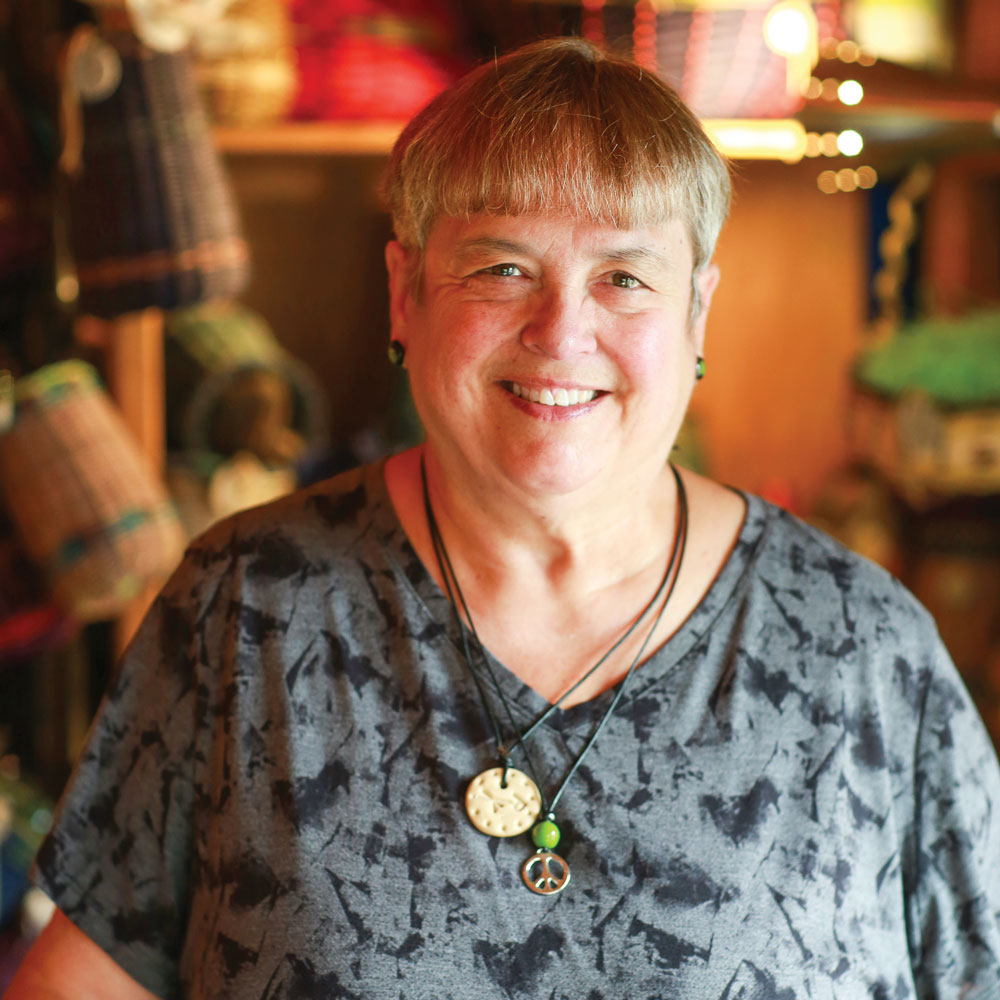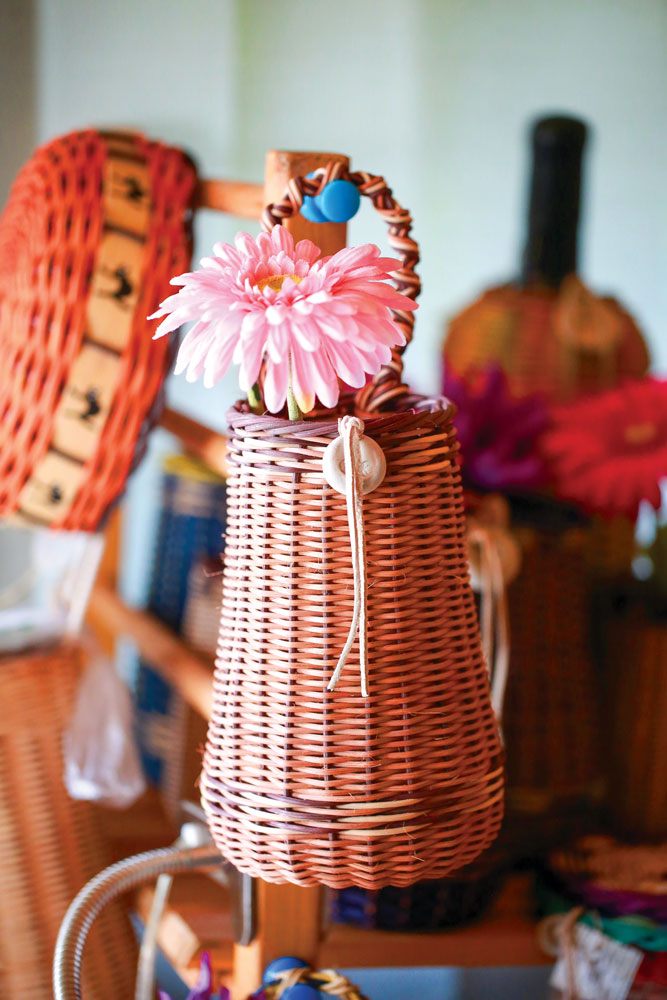Weaving Wonders
By Lea Cramer • Photos by Jamie Conners
Nestled on the misty shores of Whidbey Island, Regina “Reggie” Kastler does more than weave baskets; she intertwines narratives, traditions, and a profound passion into every strand of reed. For the owner and weaver behind Basket Works N.W. by Reggie, the creations are more than just containers; they overflow with resourcefulness and personal history.
Kastler’s foray into basketry was woven from a life rich with familial artisanal heritage. Her father and grandfather were more than woodworkers; they were master carpenters, crafting not only looms and spinning wheels, but also the very fabric of Kastler’s creative identity. She bought the second loom her grandfather ever made and now owns her mother’s loom, which was also made by her grandfather. It is the only one left in the family and is her most coveted heirloom.
Her mother, a draftsman and artist, added further threads of inspiration, and encouraged a young Kastler to explore and expand her creative horizons. The spark that ignited her passion for basket weaving came from her twin sister, who in the early 1980s took a basketry class and unknowingly set Kastler on a self-taught path that would lead to a lifetime of weaving.
As a youth, Kastler played with woodworking, sewing, fashion design, and stained glass—each contributed to the robust foundation from which her basketry would later flourish. It was her unique approach to the craft, blending natural fibers with hand-dyed colors and fashioning distinctive shapes, that would come to define her work.
Each basket, with its intricate weaves, vibrant hues, and ornamental embellishments, is a small objet d’art, transforming humble materials into striking pieces.
“I’m always coming up with new ideas,” Kastler said. This eclectic mix of influences and her meticulous attention to detail culminated in a milestone achievement on July 19, 2024, when she completed her 19,000th basket.
In Kastler’s hands, basketry is not a static craft, but a dynamic conversation between tradition and originality. Her process is as deliberate as it is creative. It begins with the selection of high-quality natural fibers, which are hand-dyed to produce a palette that evokes the earthiness of the land and the depth of the sea—ruddy reds, inky indigos, and everything in between. This careful preparation sets the stage for baskets that are as visually compelling as they are functional.
The art of reed basket weaving is both simple and sophisticated. It starts with soaking thin, flexible reeds in water until they are pliable and ready to be shaped into the basket’s form. Kastler begins with a sturdy base, using thicker reeds to provide the necessary support in the form of spokes. The height of the basket is determined by the length of the spokes. From there, she weaves thinner reeds around the base, building up the basket’s sides with rhythmic precision. Patterns emerge as she varies her techniques, playing with the colors and textures of the reeds to create designs that are at once intricate and organic.
“I’m not afraid of color,” she said. “I used to think red was my favorite color. Now it’s whatever color I am working with.”
As the basket takes shape, Kastler’s skilled hands adjust the tension of the weave, ensuring both uniformity and strength. The final flourish comes in the careful trimming and tucking of the reeds, securing the weave, and completing the piece. She says she finds the process to be therapeutic.
Kastler’s baskets are more than just objects—they are deeply personal wonders, shaped by an intimate collaboration with her clients. She takes the time to understand their needs, tastes, and the stories they want their baskets to tell. Whether she is crafting a ceremonial basket for a Native American ritual or a custom-made piece for a collector, Kastler’s handiwork is imbued with respect for both the client’s vision and the traditions of the craft.
Her oeuvre is a testament to the versatility of basketry, spanning traditional and contemporary styles. Each basket, with its intricate weaves, vibrant hues, and ornamental embellishments, is a small objet d’art, transforming humble materials into striking pieces. Inspired by the wishes of her clients, Kastler finds joy in addressing the practicalities of everyday life, crafting the perfect basket for any household need with an eye for both function and form.
As much as she is a creator, Kastler is also an educator, dedicated to passing on her love of basketry to others. She leads workshops for both adults and children, where she shares the techniques and artistry that underpin her work. These sessions are more than just craft lessons; they are a means of preserving an art form that has been an essential part of human life for millennia, particularly in regions like Whidbey Island, where baskets were once integral to survival.
Historically, basketry was a vital skill. Baskets made from cedar, spruce, and cattails served a wide array of purposes—from food preparation and storage to hats and capes. The advent of the Industrial Revolution shifted basketry from a necessity to an art form. Mass production made handcrafted baskets a rare and cherished commodity. Yet in recent years, interest has been resurgent in the artisanal, a yearning for the unique and the handmade; Kastler is at the forefront of this revival.
Kastler’s handiwork bridges the past and the present. Through her custom commissions and educational workshops, she continues to celebrate and advance the art form, ensuring it remains vibrant and relevant.
It is artists like Kastler who keep the legacy of basketry alive, weaving heritage and innovation in every piece they create. Basketry, as Reggie Kastler so beautifully demonstrates, is not just an art—it is a living legacy.



